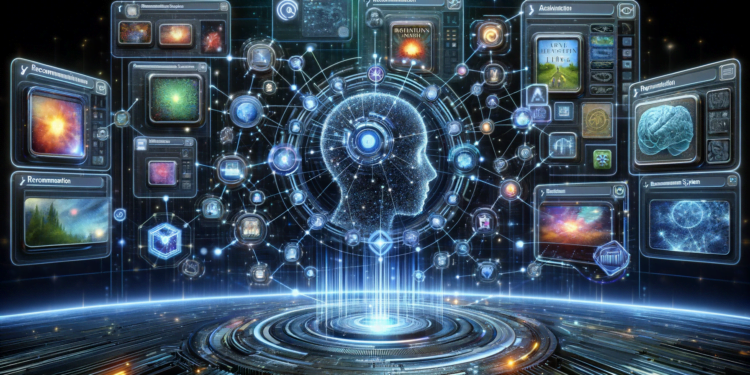Recommendation systems (RS) have become ubiquitous in the information age, filtering meaningful content through algorithms that correlate user preferences and patterns. The framework of this field bifurcates into collaborative, content-based, and hybrid recommendations, combining both techniques. Let’s delve into the current landscape, highlighting significant developments and speculating on future paradigms.
Theoretical Foundations of Algorithms in RS
At the core of RS is the analysis of large datasets. Traditional methods, such as collaborative filters, operate under the premise that “similar users have similar interests.” The basic technique, user-based, compares user ratings to offer recommendations, while item-based considers the similarity between rated items. The computational challenge is exacerbated by the sparsity of the resulting utility matrices, typically mitigated by dimensionality reduction techniques, such as singular value decomposition (SVD).
Recently, the integration of Deep Learning (DL) in RS offers improvements in discerning complex data structures. Hybrid approaches employ deep neural networks to extract features, using autoencoders and restricted Boltzmann machines, whose effectiveness lies in the distillation of refined latent representations of users and products.
Pioneering Advances and Practical Applications
At the forefront, technologies such as Natural Language Processing (NLP) and sentiment analysis are integrated to interpret reviews and comments, providing an additional dimension to the user profile. The BERT model (Bidirectional Encoder Representations from Transformers) is emblematic, enhancing the capability to understand context in text evaluations.
Long short-term memory (LSTM), a variant of recurrent networks, leads advancement in sequence prediction, which is relevant in RS where the chronological order and temporality of user interactions provide clues about changing preferences.
The field of Reinforcement Learning (RL), through agents that learn optimal policies of selecting actions by exploring the environment, has begun its incursion into RS. This enables systems to adapt recommendations in response to dynamic feedback, optimizing user experience in real-time, weaving an increasingly personalized experience.
Comparison with Previous Models
A comparative study reveals a shifting balance. While traditional methods such as kNN (k-nearest neighbors) and SVD maintain popularity for their simplicity and transparency, cutting-edge DL and RL algorithms demonstrate superiority in precision and scalability. However, the implementation of advanced DL and RL entails greater technical complexity and obfuscation in the interpretation of underlying mechanisms – a gap that is still being worked on to resolve.
Projections and the Challenge of Explainable Artificial Intelligence
Looking to the future, an emphasis on the development of Explainable AI (XAI) is anticipated, striving to unravel the black box of advanced models. Also, as user privacy projects into the forefront, a proliferation of decentralized RS and federated approaches to machine learning are anticipated.
Case Study Exposition
Netflix, a pioneer in the area, has successfully implemented an RS that utilizes a combination of collaboration techniques and DL, solidifying its leadership in the streaming industry. Amazon, through hybrid algorithms, has revolutionized e-commerce by individualizing the shopping experience.
Even social media platforms, such as Twitter and Facebook, demonstrate the integrity of RS based on graph analysis and NLP, unraveling networks of connection and content to increase the relevance of the user’s feed.
In Conclusion
RS are at a turning point, driven by relentless advancement in algorithms and machine learning techniques. From mathematical fundamentals to the most current applications, we witness an evolving spectrum. New paradigms, such as explainability and privacy protection, point towards a future in which RS will be more transparent and personalized, offering promises of disruptive innovations in human-computer interaction. Far from becoming saturated, this field continues to be fertile, marking intriguing challenges for the scientific community and industry alike.






















